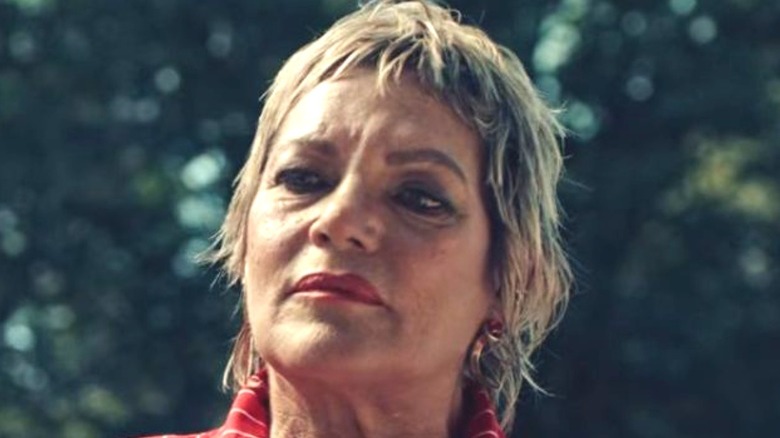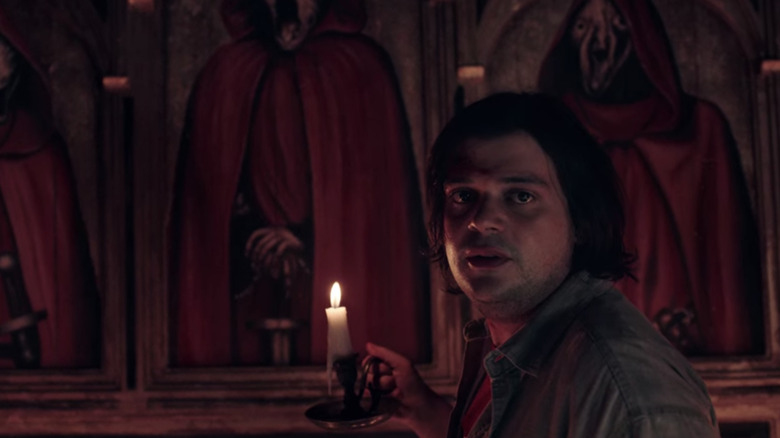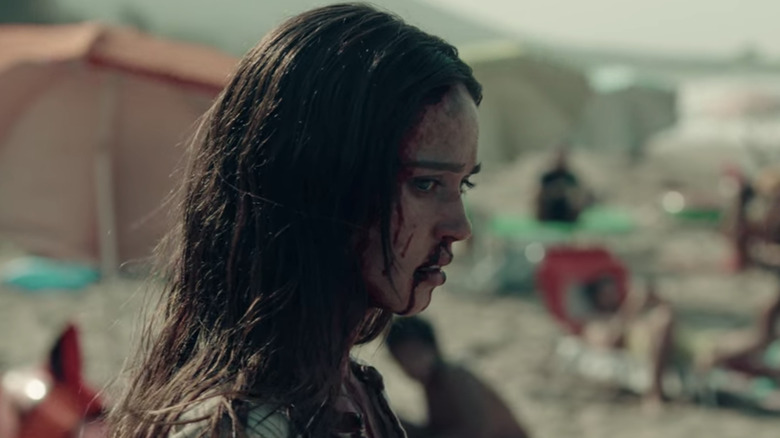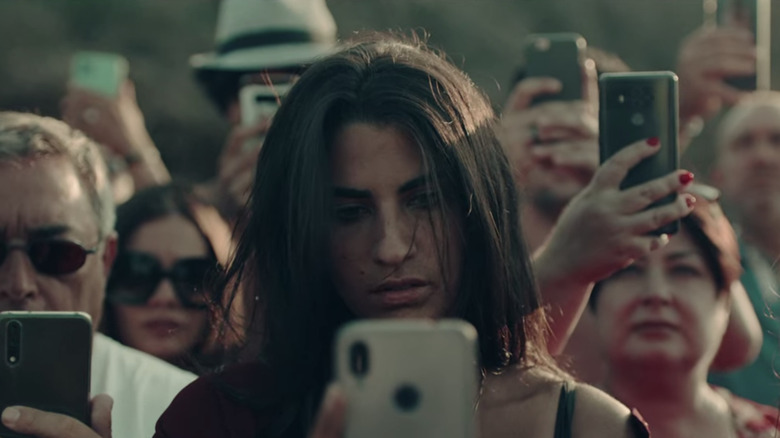The Ending Of A Classic Horror Story Explained
Warning: This article contains spoilers for "A Classic Horror Story."
One of the newest horror movies to hit Netflix has subscribers going wild for its terrifying take on the genre. "A Classic Horror Story" is an Italian horror film that follows five strangers who meet during a ride-share trip. The main character Elisa (Matilda Lutz) is headed to her parent's home for a medical procedure, and on the ride, she meets her fellow passengers Sofia (Yuliia Sobol), Mark (Will Merrick), Riccardo (Peppino Mazzotta), and Fabrizio (Francesco Russo). When their RV crashes into a tree, the group finds themselves stranded in a creepy wooded location that none of them recognize. They soon realize that they've got sinister company in the mysterious woods, and they have to band together to survive.
"A Classic Horror Story" is currently trending on Netflix, and fans are loving the self-aware plot as well as its ties to other successful horror films like "Midsommar." There's a pretty huge plot twist at the end of the movie, however, that puts it in a category of its own. Here's the end of "A Classic Horror Story" explained.
Osso, Mastrosso, and Carcagnosso are famous in Italy
The main group at the center of "A Classic Horror Story" finds an eerie abandoned house in the woods, where much of the movie's action takes place. Upon first discovering the taxidermy animals, precariously placed candles, and other creepy regalia throughout the building, Fabrizio is reminded of an urban legend of three monstrous brothers named Osso, Mastrosso, and Carcagnosso. According to the ancient lore, the brothers saved a city from starvation, but not without a price — the brothers took the tongues, eyes, and ears of a sacrificial victim, and though the other villagers were saved, they lived the rest of their lives as a "herd," following the brothers blindly.
The story of Osso, Mastrosso, and Carcagnosso is creepy enough as-is, but it turns out it wasn't just created for the film — it's based on an urban legend that's still popular in Italy today. The original legend traces back to the 15th century when the brothers were banished from Spain because they murdered their sister's rapist. The brothers landed off the coast of Favignana near the Sicilian islands, where they created new societal rules and eventually founded three major crime organizations in Italy: the Cosa Nostra (or the Mafia), the 'Ndrangheta, and the Camorra (via La Mafia Uccide Solo d'Estate).
Elisa's future is left unclear
Elisa is the sole survivor by the end of the movie, though her fate isn't exactly spelled out for us. She manages to escape from the woods and follows a kid to an unexpected and very crowded beach — and not only does she have cell service, but there are plenty of people around to offer help or call the police for her. However, Elisa doesn't talk to anyone. She checks her messages, drops her phone in the sand, and walks into the ocean in a daze. It's assumed that one of the dozens of beach-goers will eventually help Elisa out, but their immediate responses aren't helpful at all — more on that later.
Another thing to note is that very early on in the film, we learn Elisa is headed to get an abortion near her parents' home. Obviously, the trauma of the events in "A Classic Horror Story" may have taken a toll on her body and caused issues with the fetus that way. However, when she gets in the ocean water, she embraces her stomach in a way that looks to be self-comforting or even protective. Is she simply trying to process what just happened to her over the past few days? Or is she reconsidering the abortion?
It's left up in the air, but it nonetheless makes for an interesting open ending.
A Classic Horror Story contains cultural commentary
As mentioned previously, the beach-goers Elisa finds once she escapes don't exactly offer to help her. In fact, they all gawk and pull out their phones, seemingly to record or take pictures of her. This seems to be a clear critique of the state of society today, where people are so obsessed with their technology that their first instinct is to record someone inured and bloody, rather than offering assistance.
"A Classic Horror Story" also comments on the way we as a society consume violent media. The post-credits scene features an alternate version of Netflix titled Bloodflix, where Fabrizio's violent snuff film is uploaded — despite him being killed — among tons of other similar real-life gore content. The fact that there's so much available for any viewer to browse through is made horrific when you realize the movies all feature actual violence — especially since "A Classic Horror Story" even shows some of the viewers' comments, with people saying they hoped Elisa would've died, or commenting on Sofia's physical appearance.
Once you get past the gore and scares in "A Classic Horror Story," there is some intriguing social commentary that is worth paying attention to.



